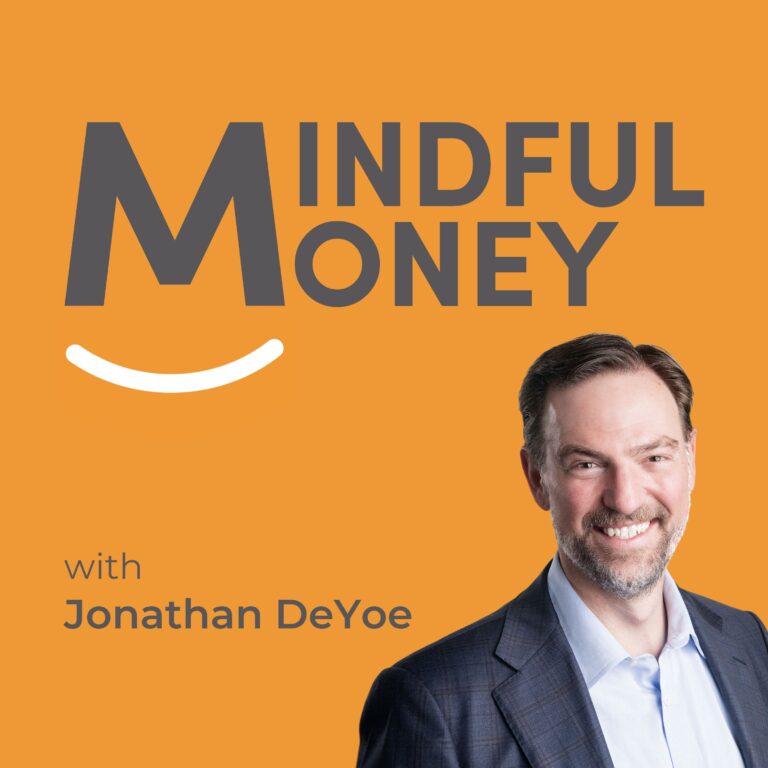This blog is the ninth of a 10-part series which covers everything you need to know to get started on your path to financial freedom:
1. The First Step in Any Financial Plan is NOT What You Think. We Start by Knowing What is Worth Seeking.
2. Developing Your Vision of a Perfect Life
3. Adopt a Savings Habit
4. Emergency Fund Basics
5. Eliminate High-Interest Debt
6. Saving and Investing for Retirement
7. Paying Down Low-Interest Debt and Building Taxable Savings
8. Simple, Basic, Mindful Investing
9. The Final Step – Portfolio Optimizers
10. The 10 Core Beliefs of Mindful Investors
Am I doing enough?
That is a common question people ask as they work toward their financial goals.
If you have come this far down the list of items to take care of in your personal financial life – if you have implemented the prior eight steps –
you are already doing enough.
If you have completed the prior eight steps, then you have:
- Developed your vision,
- Started the saving habit,
- Build an emergency fund,
- Eliminated high-interest debt,
- Begun investing for retirement,
- Paid down low-interest debt,
- Started investing additional funds in a taxable portfolio, and
- Implemented simple, basic, mindful investing.
This is… seriously… enough.
What we are talking about now are little optimizers. These are the little tweaks you can make – if you want – that will enhance your outcomes modestly. These are all just a little extra work or cost for just a little extra boost in long-term outcomes.
There is a handful of additional investment knowledge that will help you earn better returns and keep more of your returns. These are portfolio optimizers. When correctly put into action, they can increase the probability of achieving your goals – and sooner.
Reduce Expenses
We have already touched on this, but it is so important it bears repeating here. The fees you pay – for transactions, the tools you use, advice, etc. – cause an instant reduction in portfolio size AND reduce all future compounding on that small slice of your portfolio. Repeat annually and this is a very large reduction in your portfolio.
You have to pay some fees. You’ll choose to pay other fees. Be aware of the total cost and choose wisely.
Tax Management
Portfolio optimization isn’t about maximizing what you earn, but maximizing what you keep. The largest, most persistent investment cost is taxes. Though taxes are inevitable, there are several ways to minimize the tax bite in your portfolio.
- Choose the right fixed income. If you are in a higher bracket, make sure you’re looking at after-tax yields. You will likely want to use tax-free municipal bonds. If you’re in a state with a high income tax (like NY or CA), focus on local municipal bonds.
- Whenever possible, avoid short-term investment decisions. Short-term gains (gains taken within 1 year of investing) are subject to ordinary income taxes. Long-term gains receive more favorable capital-gains tax treatment. If you must take gains… look to take long-term gains.
- Harvest your losses. You owe the IRS only on your NET capital gains, so by harvesting losses, you are offsetting gains and reducing your taxes. You may not take gains every year, but you should ALWAYS be on the lookout for losses you can capture because you can carry them forward and apply them to future years.
- Consider asset location. Some types of investments spin off more taxable income or require more frequent trading. These investments are best suited for tax-advantaged accounts (see below). If you place your buy-and-hold, low-income creating investments in taxable accounts and your more active, high-income creating investments in a non-taxable account, you will reduce your tax burden overall.
- Utilize tax-advantaged accounts like IRAs, Roth IRAs, Health Savings Accounts (HSAs), 401(k)s, 403(b)s, etc. If you have a consistent high income, consider a Cash Balance plan.
- Tax-bracket arbitrage. In retirement, when pensions and Social Security kick in and you fill the income gap by withdrawing from your portfolio… make sure you are withdrawing from the right place relative to your tax bracket. Use your taxable withdrawals (traditional IRAs and 401(k)s) and your non-taxable withdrawals (HSAs and Roths) strategically to stay in lower-tax brackets.
Investment Factors (Return Premiums)
We have already touched on the first broadly-accepted “factor” of premium performance – the equity risk premium. Put simply, equities have a higher expected return than bonds. Given stocks’ long-term average of 10-11% (or 7-8% after inflation) and bonds’ long term return of 5-6% (or 2-3% after inflation), it should be obvious that the more of the 10% stuff you own relative to the 5% stuff, the better your long-term returns will be (even if your short-term outcomes vary widely). Owning equities provides a premium return relative to owning bonds. The cost of owning equities is the variability of their short-term returns. The longer you hold them, however, the higher the probability that you will outperform.
The equity risk premium is NOT the only available premium in equity investing. In 1992, Eugene Fama and Kenneth French published a paper that added 2 additional risk-premia factors – the size factor, and the value factor. What they discovered is that a broadly-diversified portfolio that tilted towards smaller companies and/or companies that had a higher book value relative to their market price tended to outperform over long periods of time. The 3 factors became known as the Fama French Three-Factor model.
Over 20 years later, in 2014, the pair added a 4th and 5th factor to their model. Their research discovered the profitability factor and the investment factor. They determined that companies reporting higher future earnings have higher returns in the stock market and that companies who re-invest their profits in future growth projects tend to have higher returns in the stock market as well. Their model was subsequently renamed the Fama French Five-Factor model.
There have been hundreds of potential factors that academics have researched to find an edge in investing. There have also been thousands of investing products that have been created to capture the additional potential return of this cornucopia of factors. If you decide to take advantage of factors, you must be very careful. Most of these over-promise and then under-deliver.
In my book (which is right out of Dimensional’s book), a factor is only investible if it is:
- Persistent – it must work over long periods of time,
- Pervasive – it must work across all geographies and sectors,
- Investible – it must work in markets after considering costs (not just on paper),
- Intuitive – it just makes risk-based sense as to why the premium may exist, and
- Robust – it must be true for multiple similar definitions.
A factor that cannot claim all 5 is not a factor that I would invest in. To be safe, I stick with the Fama French Three-Factor or Five-Factor Models and I ignore most of the rest.
I believe that these factors can generate above-market returns over time. And I invest my own portfolio along these lines.
When you rely on these factors, you can increase the probability of higher returns. However, they will go in and out of favor, which is why it can be extremely difficult to follow this strategy for the long-term as you work toward your goals.
No matter what diversified portfolio tools you use, there will be periods where different diversified portfolio tools will be outperforming yours and you will feel the pull to change… you must fight the urge. I use the factors because the academic research says they work over long periods of time even while they fail over some shorter periods of time.
I know, at the outset, there will be periods where I will feel stupid because one or a number of these factors will be out of favor and I will not be keeping up with a similarly-indexed benchmark. It is on me in those moments of under-performance to remain faithful to the research and patient for the long-term to arrive.
If this sounds insane to you or you know you can’t hold while things around you are doing better, then factor investing is simply not a good idea for you. Instead, just stick with your portfolio of global indices. That is good enough.
Securities Lending
Securities lending is the practice of loaning out securities for a short period of time in exchange for collateral and fees. It is a common strategy among investment managers that can enhance an investment portfolio’s return.
If you invest in individual securities, then you likely give your broker-dealer/custodian the right to lend your securities to institutional borrowers and collect the collateral and fees (which they likely keep for themselves). If you own individual equities and wish to benefit directly from securities lending then you should look into your broker-dealer/custodian’s Fully Paid Lending program… if they have one. If they don’t, you may want to consider a different broker-dealer/custodian.
Because of their broad holdings and modest trading activity, index and index-like mutual funds and exchange-traded funds (ETFs) are primary sources for securities loans. In most cases, if you wish to benefit from securities lending, the best way to do so is by owning mutual funds or ETFs active in securities lending.
This is especially true among funds that strive for maximizing revenue for shareholders (I think of Vanguard and DFA). That additional revenue can offset your investment costs, leaving more of your money working toward building wealth. In rare cases, there is enough securities lending revenue to pay ALL the costs of your fund or ETF and add in a small way to your total return.
Flexible Trading
In addition to the costs associated with trading, there is also opportunity. Flexible trading is a strategy that allows you to lower the former and increase the latter.
Millions of trades are executed in the markets every day between buyers and sellers, each seeking prices that are not always aligned. If you execute a trade immediately without consideration of those price differences, you risk buying too high or selling too low. Funds that can be guilty of that are those that need to adjust their holdings on schedule to stay consistent with the markets they are tracking, regardless of price – also known as index funds.
With a more broadly-diversified portfolio focused on reducing turnover, you adopt a more flexible and patient trading strategy. For all the investment factors mentioned above, for instance, there will be many stocks with similar expected returns that can be viewed as interchangeable in the short-term. That means having the option to trade whichever one provides the biggest price advantage. This more dynamic portfolio management approach can lead to higher expected returns and lower costs over more fixed- or rule-based portfolios.
None of the five optimizers are necessary. If you have completed the prior eight steps, you are already ahead of the game and likely well on your way to personal financial independence.
Each of our five portfolio optimizers require a little extra work and research and each provides an additional opportunity to earn an incrementally higher net-total return.
Add them or don’t add them, it is entirely up to you. And, if you have faithfully completed the first eight steps… you’ve done enough.
If you are working with a professional advisor, then they should be doing all (or most) of these things on your behalf. If you don’t know whether they are or not, ask them. If they aren’t, then you know you can do better. If you want a second opinion, don’t hesitate to reach out to me HERE. Simply select “Looking for a Wealth Advisor” from the drop-down and write “second opinion” in the questions box. I’ll get back to you within 48 hours.






